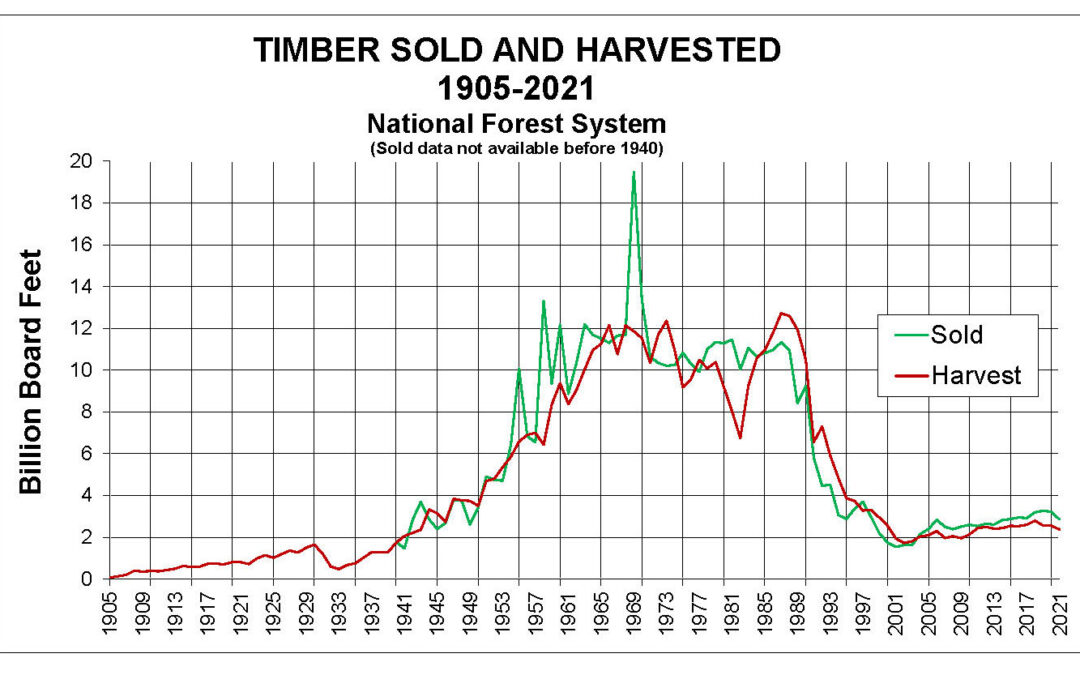In the 20th century, the Forest Service promised to build post-war America with logs cut from national forests. Logging would be sustainable, it promised, with no more timber removed in any decade than could be cut forever thereafter. Logging doubled in the 1940s, from 2 billion to 4 billion board feet (bf), and doubled again by 1960, plateauing at about 12 billion bf from the 1960s to 1990. Throughout its timbering era, the Forest Service was cutting its best, biggest, and most valuable trees. By the 1980s, loggers were paying top dollar (about $150/mbf) for the Forest Service’s trees.
By the late 1980s, the accessible and available big trees became more scarce. The environmental trade-offs became too extreme for the public (and many within the Forest Service) to bear. Lawsuits accelerated the inevitable transition away from the Forest Service’s timbering raison d’être. When the wheels came off, the crash was not pretty. By the turn of the century, national forest logging plummeted by 80% to a level at which it remains.
The broken promise of indefinite sustained yield was not the Forest Service’s only lie. Gifford Pinchot, the first Forest Service Chief, promised that the Forest Service would be financially self-sustaining within five years. By the peak of old-growth forest logging, in 1990, Chief F. Dale Robertson reported $629 million in “net revenues.” These financial good times were not to last.
Today, Western national forests that had borne the brunt of the timber machine are like an abandoned mine removed of its valuable minerals. What’s left is like a Superfund cleanup site with flammable, worthless kindling littering our mountainsides and eroding, unmaintained logging roads polluting our streams. Cleaning up this environmental wreckage is the Forest Service’s new mission.
To sell its new mission to the American people and Congress (and “sell” it must, for it’s an unprecedentedly expensive undertaking), the Forest Service is playing its “fire card.” With billions of Inflation Reduction (sic) Act dollars in its pocket, the Forest Service has embarked on the world’s largest landscaping program. At a cost of thousands of dollars per acre, the Forest Service is paying loggers (the same loggers who used to pay the Forest Service) to remove worthless trees, chip limbs and brush, and mow our national forests to eliminate “hazardous fuels” created by its old-growth logging legacy.
We are now paying the piper for Gifford Pinchot’s 100-year-old lies. Had our national forests been managed like national parks, we would all be better off today. It’s not too late to make a down payment on the future and return national forests to the Interior Department from which they never should have been removed.


